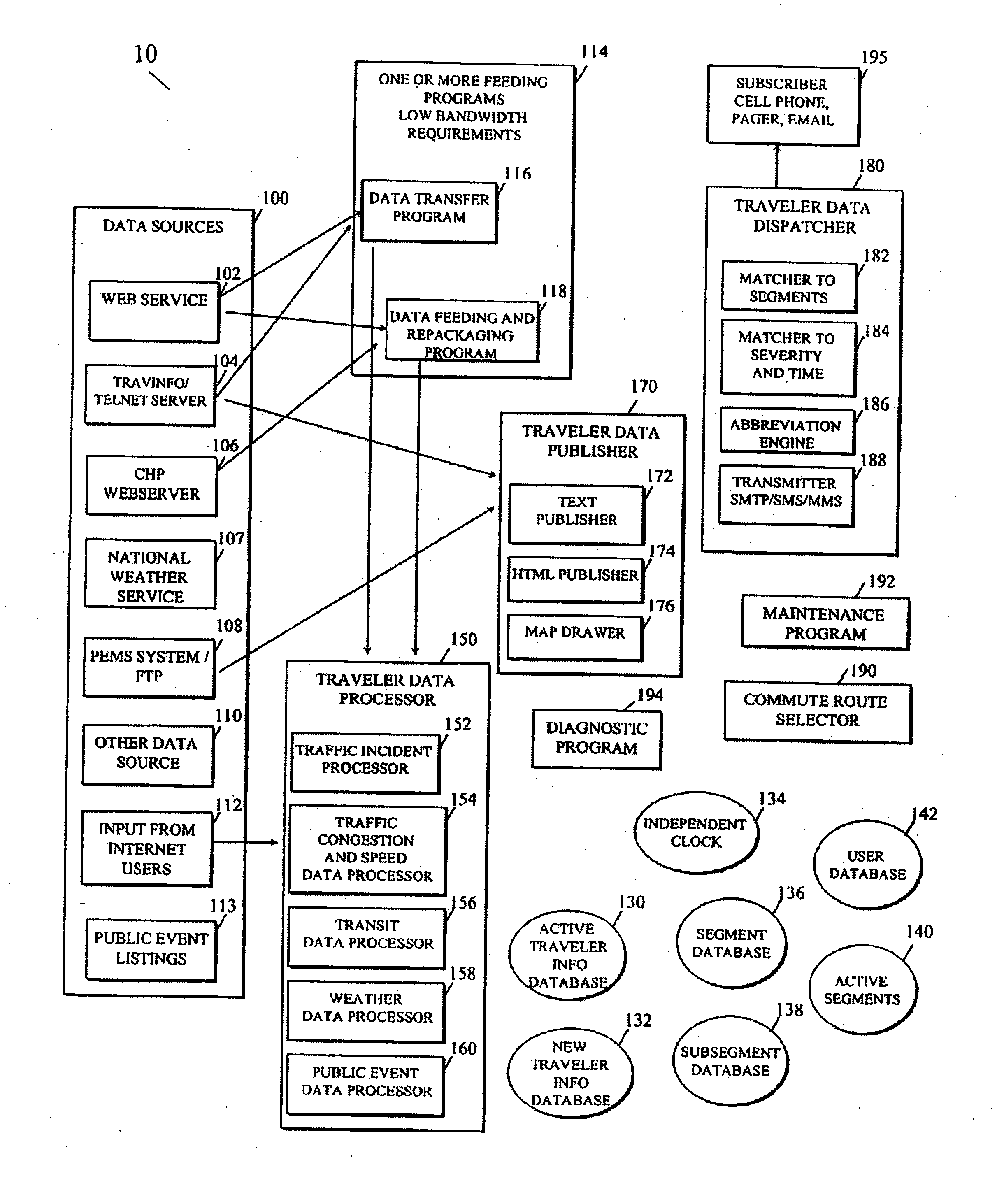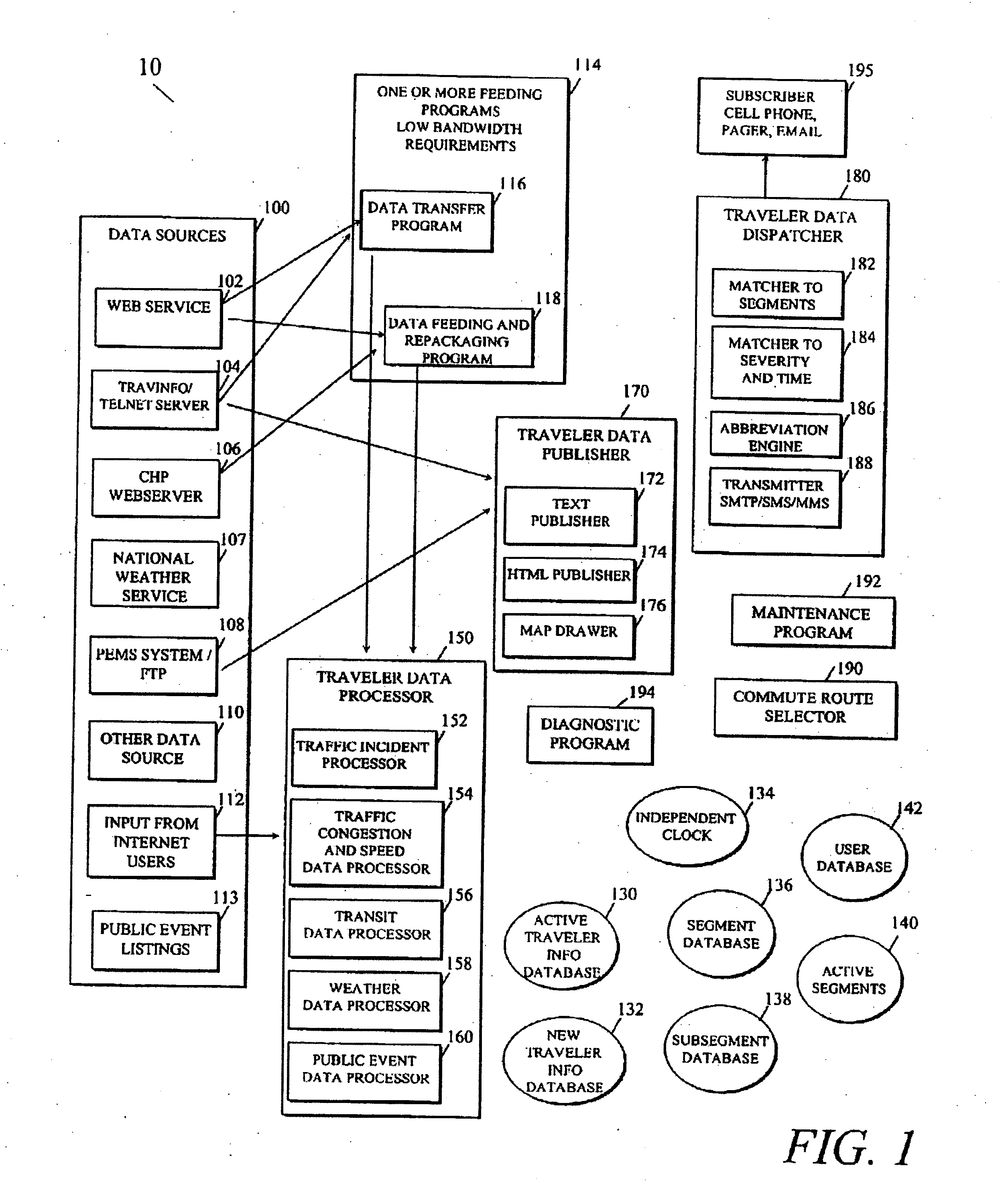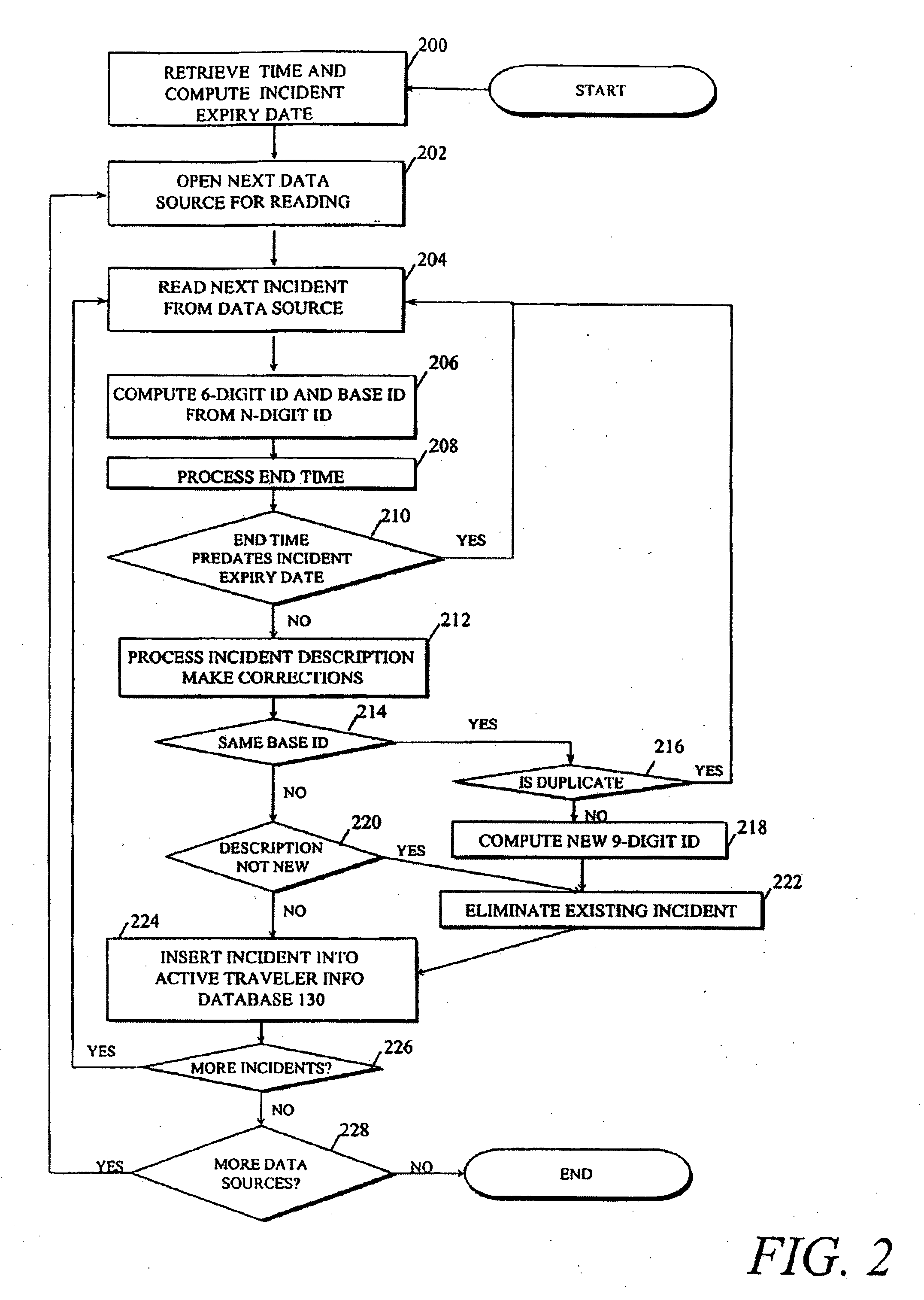System and method for predicting travel time for a travel route
a technology of travel route and system, applied in the field of system and method for predicting travel time for a travel route, can solve the problems of imposing certain communications restrictions, limited amount, complexity and size of encoding,
- Summary
- Abstract
- Description
- Claims
- Application Information
AI Technical Summary
Benefits of technology
Problems solved by technology
Method used
Image
Examples
example congestion
[0050] Example Congestion Data (CALTRANS)
Sensor IDTime ReadSpeedCongestion221903:34:03 AM472
[0051] It should be apparent that the input data inevitably contains differing content. For example, one Data Source 100 may report a location in terms of a street address, another Data Source 100 may report the same incident, having the location in terms of an equipment identification number, such as a sensor, while another Data Source 100 may report location in geographic terms, such as latitude and longitude. Therefore, standardization of data as the data is collected is required to ensure integrity of the TIDS 10.
[0052] Referring also to FIG. 1, the Traveler Information Dissemination System (TIDS) 10 includes one or more Feeding Programs 114. The Feeding Programs 114 may be Data Transfer Programs 116, or Data Feeding and Repackaging Programs 118. The Feeding Program Subsystem 114 is responsible for fetching the data from the different Data Sources 100, converting the data to a common for...
first embodiment
[0121] Active Segment 140 are preferably stored by referencing the ID of the segment and the window of time the segment is being watched by a subscriber. In a first embodiment, each segment ID with at least one subscriber watching is stored as a file on disk that can be quickly retrieved by the operating and file system of the computer once equipped with only a file name.
[0122] Hash-tables may be also be used in an alternate embodiment instead of files. Hash-tables reside in main memory instead of on the hard disk. A database system such as Oracle or Microsoft SQL Server or Microsoft MSDE may be used as well.
[0123] For example, a segment ID may be 9000 for a given segment, or 1 for a public place, where public events affecting travelers may occur. In practice, one operational system includes about 10,000 segments correlated to San Francisco Bay Area highways and about 20 public places, such as 3COM Stadium, PACBELL Park, and the SHORELINE Amphitheater.
[0124] An example of the syst...
PUM
 Login to View More
Login to View More Abstract
Description
Claims
Application Information
 Login to View More
Login to View More - R&D
- Intellectual Property
- Life Sciences
- Materials
- Tech Scout
- Unparalleled Data Quality
- Higher Quality Content
- 60% Fewer Hallucinations
Browse by: Latest US Patents, China's latest patents, Technical Efficacy Thesaurus, Application Domain, Technology Topic, Popular Technical Reports.
© 2025 PatSnap. All rights reserved.Legal|Privacy policy|Modern Slavery Act Transparency Statement|Sitemap|About US| Contact US: help@patsnap.com



